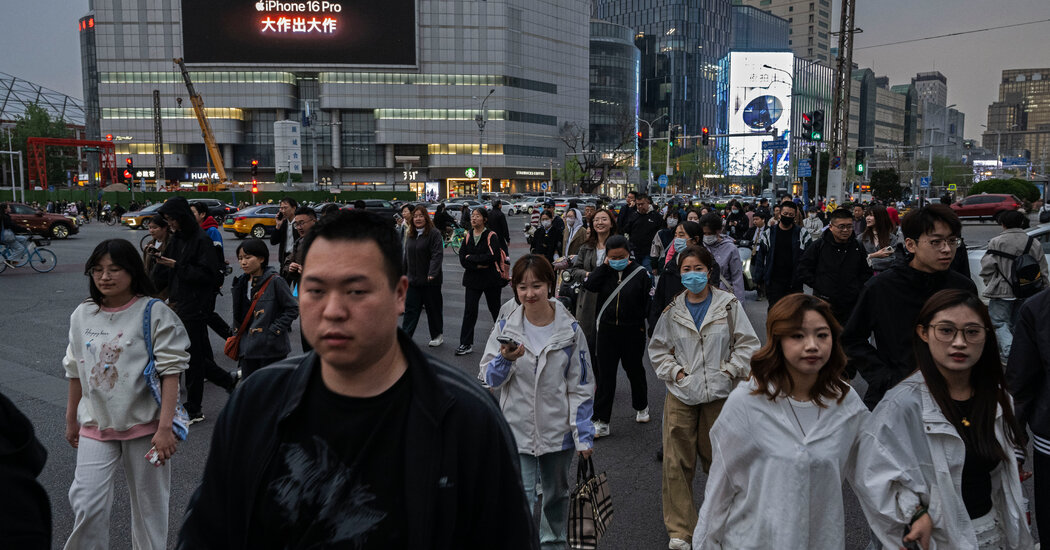Beijing on Wednesday aimed the latest blow in the escalating trade war between the United States and Washington, with plans to raise new tariffs on all American imports by 84 percent within hours.
China’s Ministry of Finance announced that it would match a 50 percent tariff on all imports from China that President Trump announced on Tuesday with its own 50 percent tariff. Last week, the two sides traded 34 percent tariffs on each other that are also taking effect now.
The latest Chinese tariffs on U.S. goods are scheduled to take effect one minute into Thursday in China.
China and the United States have now taken a series of steps in just one week that until very recently would have been almost unimaginable. For nearly half a century after the death of Mao Zedong, the two countries seemed on a course toward ever greater economic integration. Some experts even referred to the partnership of China and America as “Chimerica.”
That partnership was occasionally cast in doubt during the trade war that Mr. Trump started in his first presidential term, but it survived. The two countries’ close trade ties have since gradually loosened. But their ties have been supplemented by a complex trading web that transfers Chinese components to countries like Vietnam and Mexico, where they are assembled into finished goods for shipment to the United States with little or no tariffs due.
The pair of steep tariff increases by each side in the past week have now driven duties to a level that is likely to halt shipments of many products between the two countries, particularly if the tariffs endure more than a few weeks. Prohibitively high tariffs could ripple extensively through supply chains for many goods that rely on factories often in China but sometimes in the United States as well.
Mr. Trump’s latest tariffs, which took effect on Wednesday, hit dozens of America’s trading partners, including many longtime allies, like European nations, South Korea and Japan.
His extra 84 percent in tariffs on imports from China are on top of the 20 percent in tariffs that Mr. Trump imposed in February and March. Beijing matched those with limited tariffs, on just American fossil fuels and agricultural goods. And all of these tariffs are in addition to the standard levies both countries charge on all imports.
China did not stop with imposing further tariffs. The Ministry of Commerce announced separately on Wednesday that it was putting export controls on 12 American companies and had added six more American companies to its list of “unreliable entities,” meaning they will be mostly barred from doing business in China or with Chinese companies.
Even before China announced its latest tariffs, the European Union Chamber of Commerce in China expressed concern that Beijing’s tariffs could interfere with the operations of foreign companies that have invested in China. Many of these companies rely on assembling products in China that have components imported from the United States, notably semiconductors, that may now be heavily taxed.
“For companies that are unable to source alternatives, this could also result in them having to move their production out of China altogether,” Jens Eskelund, the chamber’s president, said in a statement. But he added that foreign companies might be cautious now about moving factories out of China because the United States has also put tariffs on import from other countries that might be alternatives to China.
Claire Fu contributed reporting.
